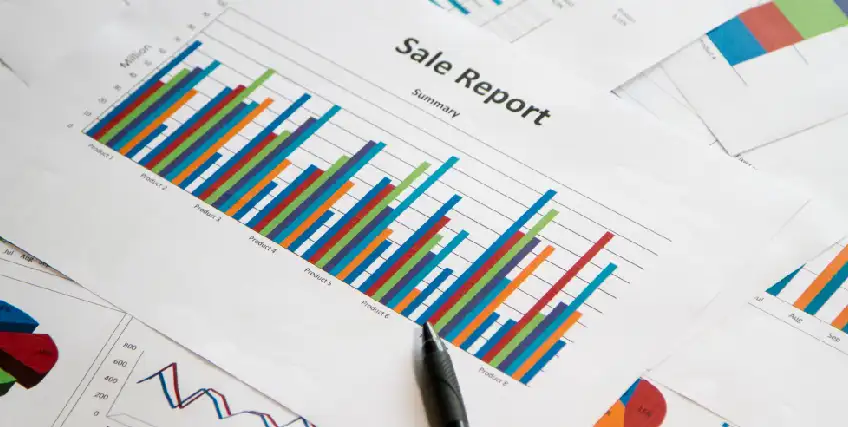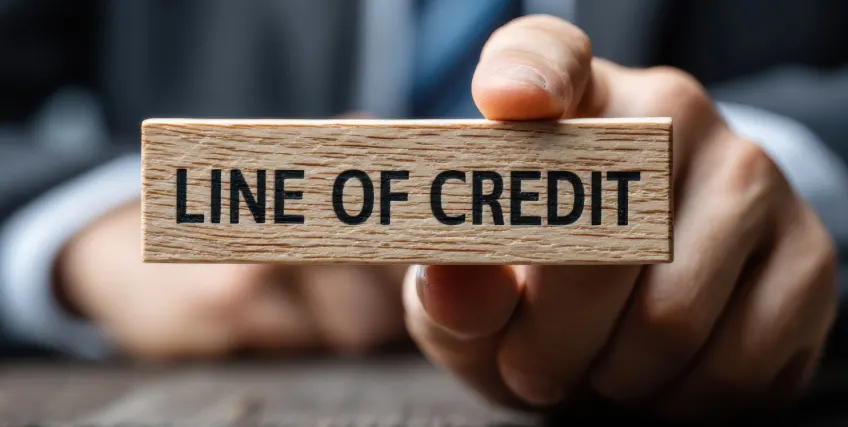Mistakes to Avoid When Using a Business Line of Credit
April 23, 2025 | Last Updated on: April 23, 2025

Small business owners often struggle to manage multiple tasks. These include managing cash flow, paying vendors, and covering unexpected business expenses. No wonder these tasks can be stressful. And, with limited money in hand, small business owners might juggle to keep their businesses growing. That's where a business credit line can help.
Unlike a traditional business loan, this financial tool offers ongoing access to funds. You can draw money when needed and repay it gradually. The best part is it offers flexibility, which is a relief during slow seasons or emergency situations.
But many businesses make small mistakes that turn into big financial setbacks when using a line of credit. Misusing this financing tool can hurt your business credit score or strain your business finances. That’s why understanding how to use it wisely is important. In this blog, we’ll explore how a business credit line or line or credit works. Also, we will look into some common mistakes to avoid, and tips to use it effectively.
What is a Business Credit Line and How Is It Useful for Small Business Owners
A business credit line gives you access to a set loan amount. You can withdraw from it whenever you need, up to a certain credit limit. However, once you repay the borrowed amount, your credit becomes available again.
This works much like a business credit card but usually has lower interest rates. And you pay interest only on the funds you borrow. This business credit line or line of credit can be useful for covering short-term needs like buying inventory, handling tax returns, or managing cash flow gaps.
Small business owners often deal with income fluctuations. A line of credit offers support during lean months or when waiting for customer payments. According to the Federal Reserve's 2024 Small Business Credit Survey, 37% of small businesses applied for financing including loans, lines of credit, or merchant cash advances in the prior 12 months.
A business credit line or line of credit is also faster to access when compared to traditional business loans. Many lenders offer this through online portals, so you can withdraw funds easily when needed. This kind of flexibility helps keep your business running without long delays. Therefore, business credit lines for startups and other small businesses are considered as one of the best financing options.
Common Mistakes to Avoid When Using a Line of Credit
It’s easy to misuse a business credit line when you’re focused on running your business. But small slip-ups can lead to major financial trouble. Here's how to avoid the most common mistakes.
Using It for Long-Term Investments
Some startups and entrepreneurs use business credit lines for equipment or real estate. These are long-term investments that take years to pay off.
However, lines of credit are designed for short-term needs. Using business lines of credit for LLC for long-term purchases can lead to higher interest rates and prolonged repayment. Therefore, term loans or SBA loans are better suited financing options for those purposes.
Maxing Out the Credit Limit
It might be tempting to use the full amount available in the best business lines of credit for small businesses. But maxing out your credit limit can hurt your business credit profile and creditworthiness.
In return, a high utilization ratio of your line of credit lowers your business credit score. This also affects your ability to qualify for small business loans later. Additionally, it limits your emergency funds.
Missing Payments or Paying Late
Late payments for a business credit line or line or credit can impact your personal credit score and business credit history. Lenders may also charge penalties or raise interest rates if you miss payments.
Therefore, it’s always better to set reminders or use auto-pay options. These can help manage your repayment terms. Paying your installments on time will help you build a strong credit report and ensure trust with card issuers and credit bureaus.
Ignoring the Terms and Conditions
Some business owners often skip reading the full agreement when signing for a line of credit. These agreements might include some hidden draw fees, annual fee charges, or interest hikes that can create surprises.
Understanding repayment terms helps manage your financial health in a better way. So, always ask questions about the application process and loan details before signing any kind or loan agreement.
Treating It Like Extra Income
A business credit line is not extra cash. It’s a debt that affects both your business and personal finances.
Treating borrowed funds through a line of credit as income can lead to financial strain. Hence, it is advised to use the funds responsibly that will help to improve your credit score and reduce future borrowing costs.
Over-Reliance on the Credit Line
Frequent use of a business credit line may signal weak cash flow. If you rely on credit lines monthly, revisit your business plan and follow bookkeeping practices.
Overuse of this financing solution can harm your credit profile and limit future financing options. So, focus on stabilizing revenue and managing business expenses efficiently.
Not Planning for Repayment
Some small business owners borrow funds through a line of credit without considering repayment. This results in stress and missed payments.
To overcome this situation, plan how to repay the loan application amount. Also, know your withdrawal schedule and match it with incoming payments or projected income.
Best Practices to Manage a Business Credit Line
Knowing how to manage a business credit line or line of credit wisely can protect your credit score and improve your financial health. These habits not only help with smoother operations but also position you well for future funding.
Here’s how small business owners can make the most of their line of credit while avoiding common traps.
Use It Only for Short-Term Needs
Withdraw funds for temporary gaps such as delayed invoices, emergency repairs, or seasonal demand. Avoid using your credit line for purchases that don’t generate quick returns. Using it for long-term investments can lead to repayment problems and higher interest over time.
Borrow What You Can Repay
Take only the amount you are confident you can repay. Borrowing beyond your cash flow limits can result in late payments and mounting debt. Careful planning protects your credit score and keeps interest payments low.
Monitor Your Credit Usage
Stay aware of how much credit you’ve used and how much is left. Ideally, keep your credit utilization below 30% of the total limit. Also, regular monitoring helps maintain a strong credit profile and allows you to identify any unusual activity quickly.
Make Payments on Time
Consistent and timely payments reflect positively on your business credit score. Lenders and credit bureaus track payment behavior closely. You can use payment reminders or automation tools to avoid missing due dates and facing late fees.
Keep a Cushion Available
Always leave a portion of your credit line untouched. This cushion acts as a safety net when sudden expenses pop up. It also demonstrates responsible usage to lenders, which may help during loan renewals or applications.
Build a Relationship with Your Lender
Regularly update your lender about your business performance and needs. A strong relationship can lead to better repayment terms, lower interest rates, or access to additional financing options.
Review Your Needs Regularly
Your credit requirements will evolve with your business. Revisit your line of credit every few months to ensure it aligns with your goals. Compare it with other financing options like small business credit cards, which may offer cash back or other benefits.
Final Thoughts
A business credit line is a helpful solution for many small business owners. But missteps like poor repayment planning or overuse can weaken your financial position. Avoiding common mistakes ensures your credit lines support long-term business goals.
Managing interest rates, tracking your credit report, and understanding your creditworthiness are key to financial success. If you’re applying for a line of credit, keep your credit history strong, gather your bank statements, and follow solid bookkeeping habits.
Take the next step. Review your current financial tools and speak with lenders to find the best business line of credit for small business needs.
Frequently Asked Questions About Line of Credit
What is a business credit line and how is it different from a loan?
A line of credit gives you access to flexible funds that you can draw as needed, up to a set limit. Whereas a term loan offers you a lump sum of loan amount that can be repaid in fixed installments. However, a credit line is revolving, that means you only pay interest on the amount you use.
What can I use a line of credit for?
A business credit line or line or credit can be used for short-term needs. These include covering payroll, buying inventory, or managing seasonal cash flow. It’s not meant for long-term investments like real estate or expensive equipment.
Will using a business credit line affect my credit score?
Yes. A business credit line can affect both your business credit score and possibly your personal credit score, if you’re personally guaranteeing the debt. This clearly depends on how you use a credit line. Factors like late payments or maxing out your credit limit can lower your credit score.
What are the most common mistakes business owners make with credit lines?
Some of the common mistakes that business owners make with credit lines are using it for long-term purchases, missing payments, and treating it like free cash are top mistakes. These actions can lead to debt buildup, poor credit, and higher borrowing costs.
How do I choose the best business lines of credit for my small business?
To choose the best business credit lines for your small business, compare interest rates, repayment terms, spending limits, and lender reviews. Also, make sure it aligns with your business needs and cash flow cycles.




